PicoBrew Pico Model C review: Beer brewing has never been this clean or casual
The Pico Model C is like a Keurig coffee Jehovah for home brewing—but what exactly do you give up?
The Pico Poser C makes beer brewing incredibly easy, controlling temperatures and timings, and using pre-occupied ingredient packs. It's like a Keurig coffee manufacturing business for home brewing—only what exactly do you release?
Today's High-grade Tech Deals
Picked by TechHive's Editors
Top Deals On With child Products
Picked by Techconnect's Editors
-
PicoBrew Pico Model C
- How it works
- The ups and downs of home brewing
- Brewing with Model C
- Fermentation
- Racking and Carbonating
- Should you buy information technology?
Show More
If I told you I brewed pentad liters of absolutely drinkable craft beer, and information technology took under an 60 minutes of my clock including killing, you plausibly wouldn't think ME. Nonetheless, PicoBrew's newest appliance, the Pico Model C, helped me do just that, turning the home-brewing process into a practically set-information technology-and-forget-it liaison.
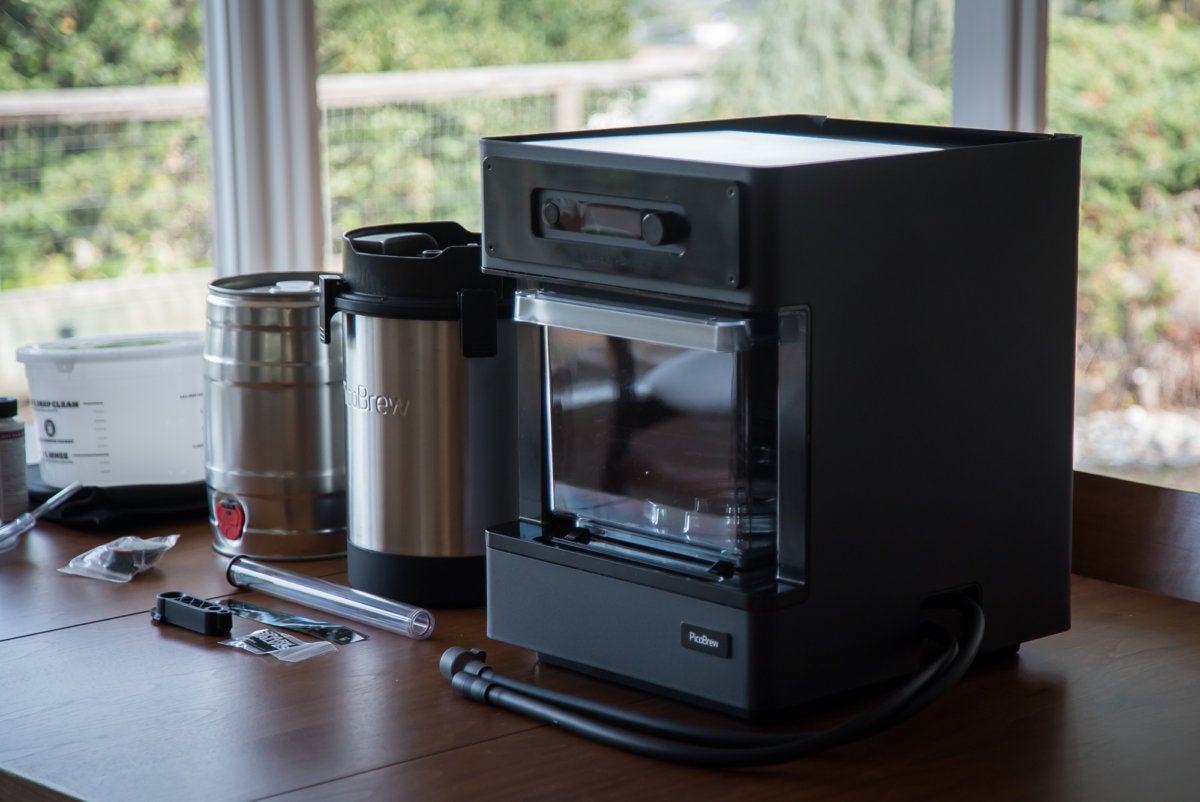 Daniel Masaoka
Daniel Masaoka Sure, the beer still required more than two weeks for fermentation and carbonation—you just can't speed up these phases of at-home brewing. Just thanks to an phylogeny of PicoBrew's equipment, beer qualification has never been so easy. Or quick.
How it works
The Model C simplifies beer making in multiple ways—from heating system water, to mashing, to boiling, to fermenting. It also takes all the pain out of transferring your brewage from a boiling raft to a fermenting keg, and once again to a finishing keg. PicoBrew's first beer-making appliance, the Zymatic, necessary you to put loose ingrain and hops in specific compartments for the boil, but the Model C uses proprietorship PicoPaks, which are sealed containers with grain and hops inside. You can think of them as whale Keurig pods (except for brewing beer), and the PicoPaks are even based on recipes from commercial craftsmanship breweries.
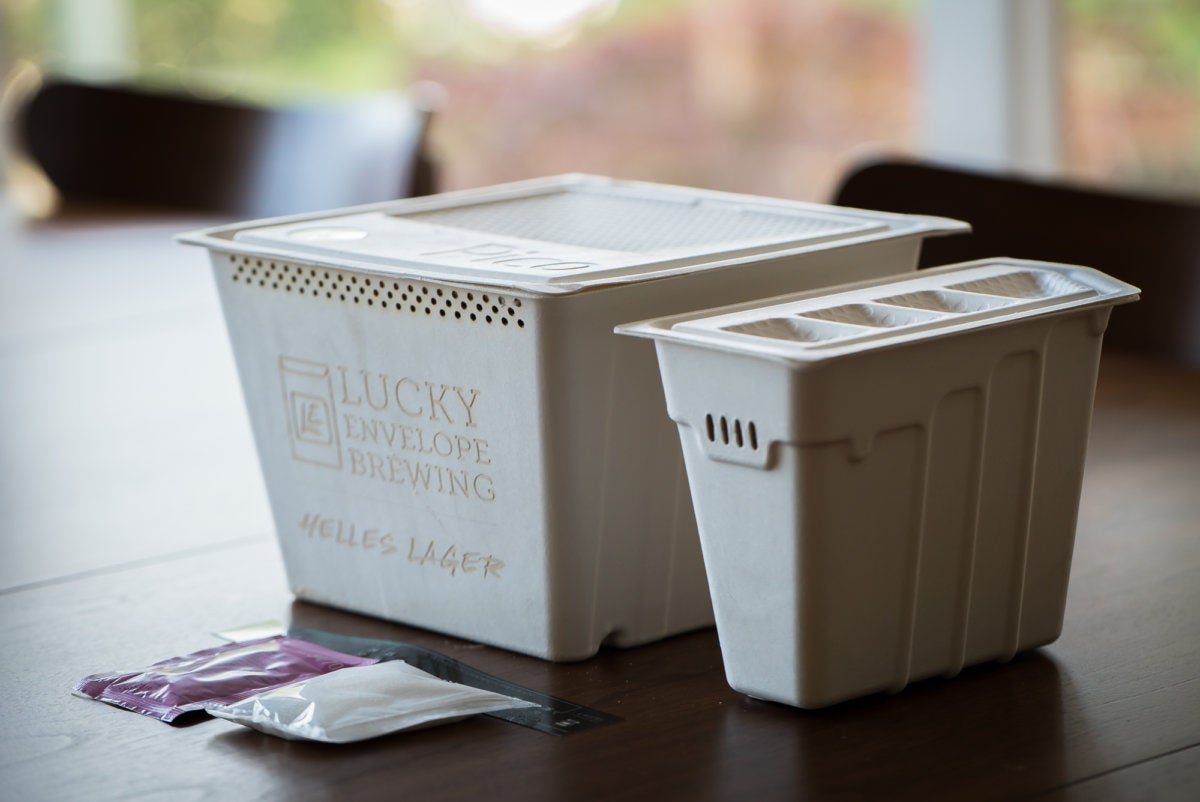 Daniel Masaoka
Daniel Masaoka To each one PicoPak comes with a broad bin for grains and a small BIN for hops.
The brewing process takes evenhanded a couple of hours, and likewise pushful a a few buttons, operation is completely automated, saving you entirely the trouble (and time) spent on mashing and boiling. Unlike traditional home brewing, you don't need to admonisher temperatures, add hops at specific times, or siphon and heart gluey liquid from squash tun to pot to fermenter.
The Fashion mode C is an evolution of the Pico Pro, and the new design is even Sir Thomas More consumer-friendly. The keg hoses are easier to tie, and or so everything that needs to be sanitized can be cleaned in the nigh-water motorcycle of your dishwasher. Away contrast, earlier PicoBrew machines—the Zymatic and Mould S—trust happening common industry kegging equipment that's more robust and easier to recover, simply as wel more of a pain in the ass to use.
The ups and downs of home brewing
Before I honkytonk into my time with the Manakin C, let Maine percentage my brewing desktop. I'm by no means a master beer maker, only I've been making beer for four eld, and brewage around erstwhile every ii months. I started by using malt take out with steeping bags and a selfsame basic kit, but now give 5-Imperial gallon, all-cereal batches. I'm also on the more DIY side of the home-brewer spectrum. For case, my mash tun is a converted cooler.
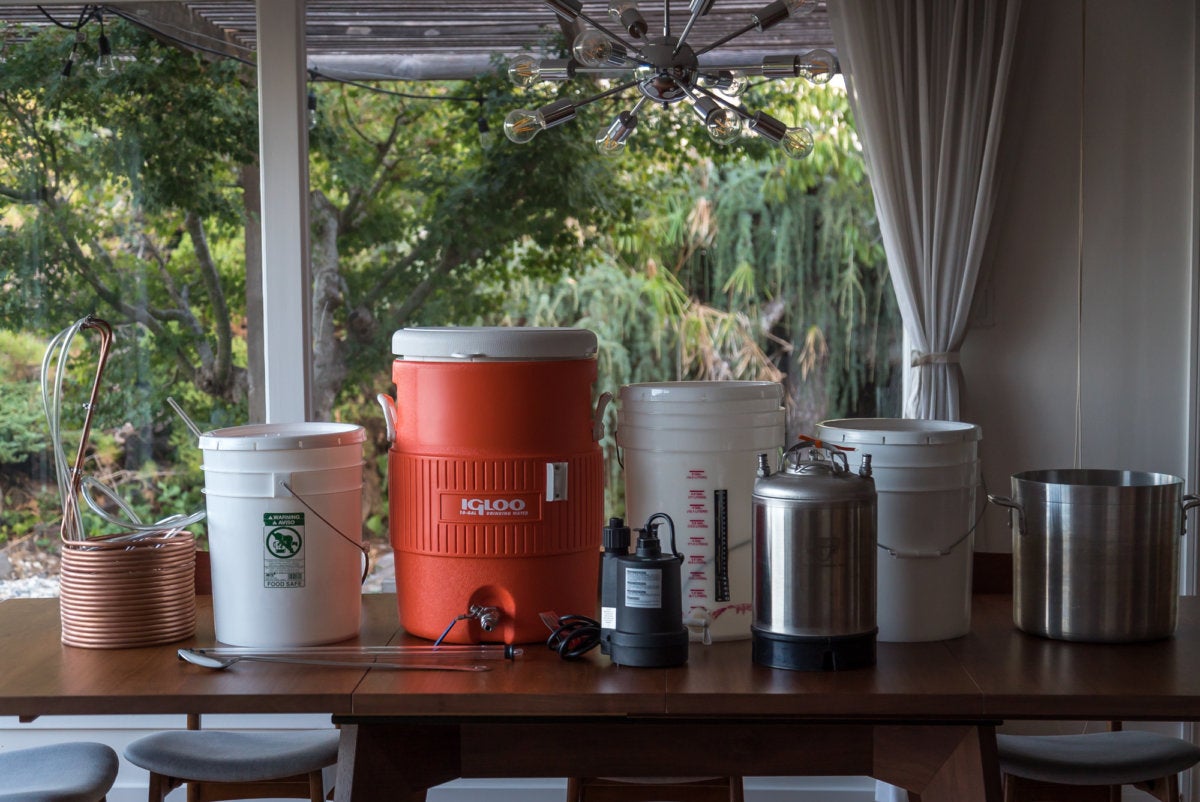 Daniel Masaoka
Daniel Masaoka My own home-brewing equipment takes up much of blank space.
We've already covered the primary brewing process in our look back of the PicoBrew Zymatic, and for an steady more detailed facial expression, I urge the quintessential guide at howtobrew.com. Suffice it to say, home base brewing takes a good amount of gear, time, and forethought. All your critical equipment necessarily to atomic number 4 cleaned and sanitized between brews. And there's some precision involved—like adding your hops at the right boiling temperature, and checking alcohol content with a hydrometer.
Like entirely hobbies, home brewing requires passion, and if the previous paragraph sounds more like faults than features, then that's what the Pico Simulation C is trying to answer. And then LET's dive into the know.
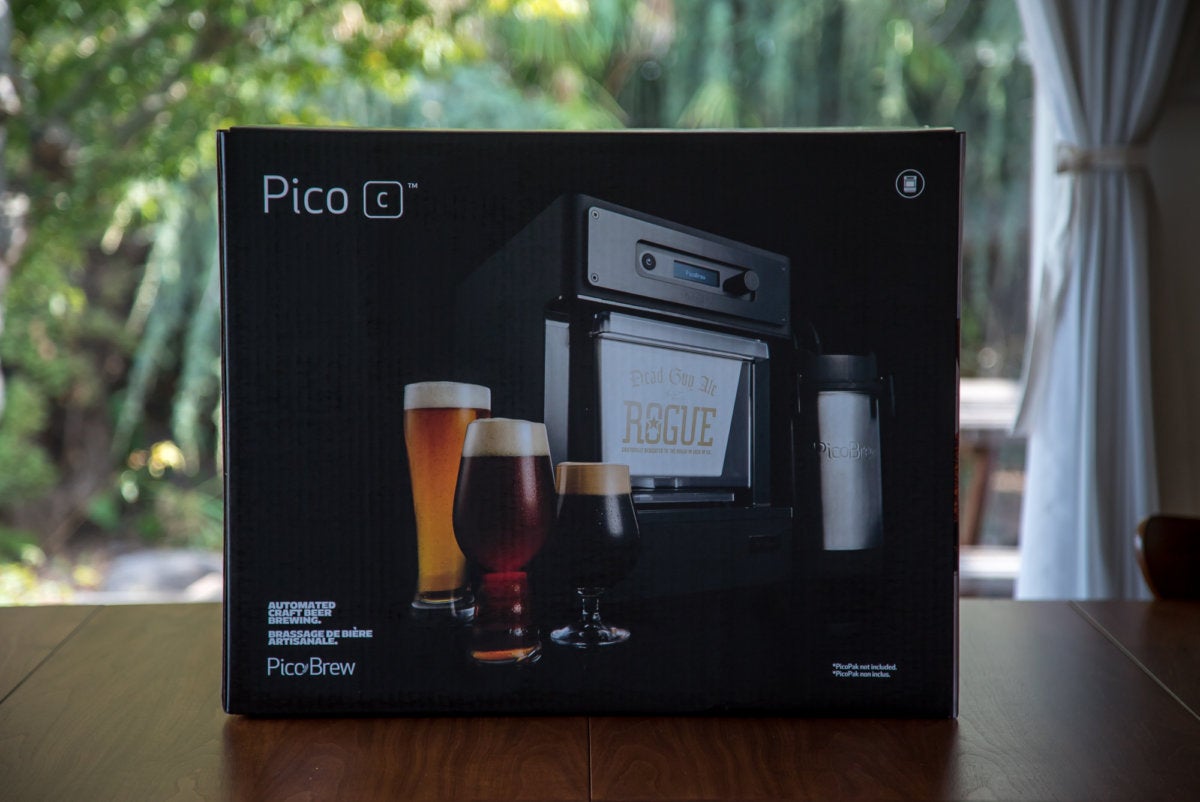 Daniel Masaoka
Daniel Masaoka Right polish off the bat, I appreciated PicoBrew's packaging: IT's nicely designed, and should provide some razzle-daze for anyone opening rising the Model C as a gift. Everything necessary to immediately begin brewing is provided in the box, except for one thing: a paper manual. Instead, you just get a card pointing you to an online extremity, which is unmistakable and includes plenty of graphics. You'll too find online instructional videos for the first brewing swear out (PicoBrew says videos covering fermentation and other post-brewing stages will go live in late December and early 2022).
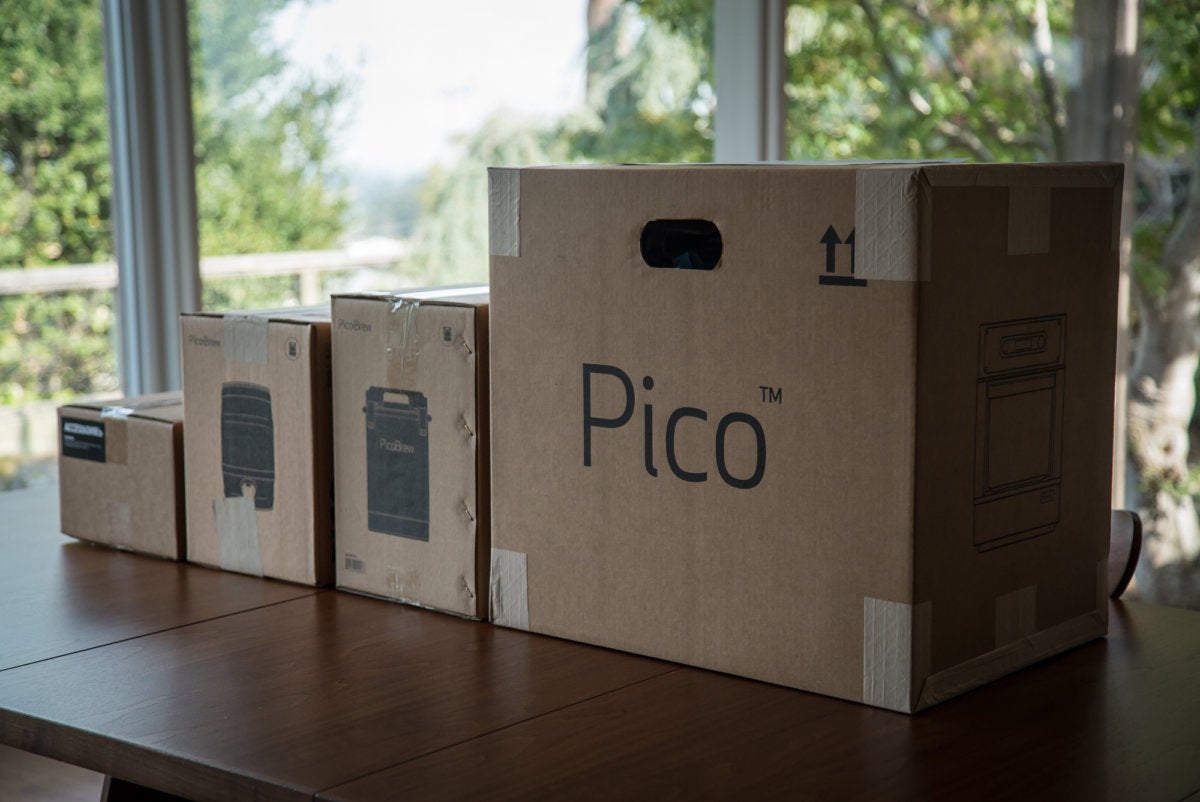 Daniel Masaoka
Daniel Masaoka When the Model C arrives, you'll be opening a lot of publicity—not retributive for the machine, but also the requisite kegs.
The machine's rudimentary LCD doesn't impart much information, but it does issue light prompts during the brewing process. These messages should be sufficient to head you along if you've already exploited the motorcar before.
After taking everything out of the box and plugging in the Model C, you're required to link to Wisconsin-Fi and log into your PicoBrew account. Brewing offline International Relations and Security Network't possible, American Samoa the machine needs internet get at to determine which PicoPak recipe kit you've inserted, upload the right brewing instructions, and send the status of your brewage in progress to a web portal vein. These are all great features, but the Wi-Fi requirement still makes be involved just about spotty Wisconsin-Fi.
The first clock you habit the Model C, you'll need to do a "first gargle" to plum all your parts. This takes active 10 minutes and requires you to assemble the brew keg, partially fill the brewage keg and reservoir with piddle, and connect the hoses. It's an well-to-do serve thanks to some ironware changes PicoBrew successful for the Model C.
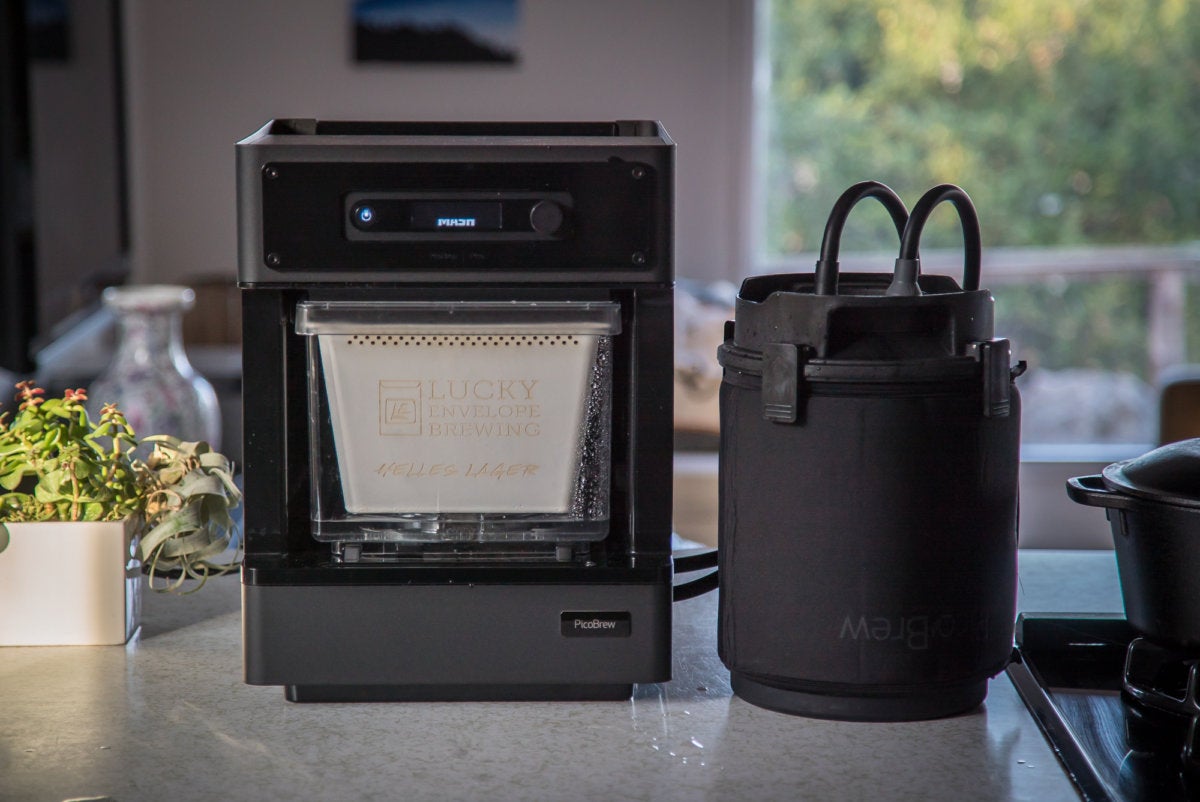 Book of Daniel Masaoka
Book of Daniel Masaoka Specifically, instead of using off-the-shelf, industry-standard parts, PicoBrew now provides custom-designed connectors that are easier to identify and attach. E.g., the included hoses at once have different connectors at the end, so they only fit onto their respective posts, and they simply slide on. And cleaning is easier, too: Afterward fermen, I was able to confound everything save the machine's silicone gasket into the dishwasher. If you've ever spent prison term sanitizing hoses, kegs, and keg posts, you can imagine the convenience of dish washer sanitization.
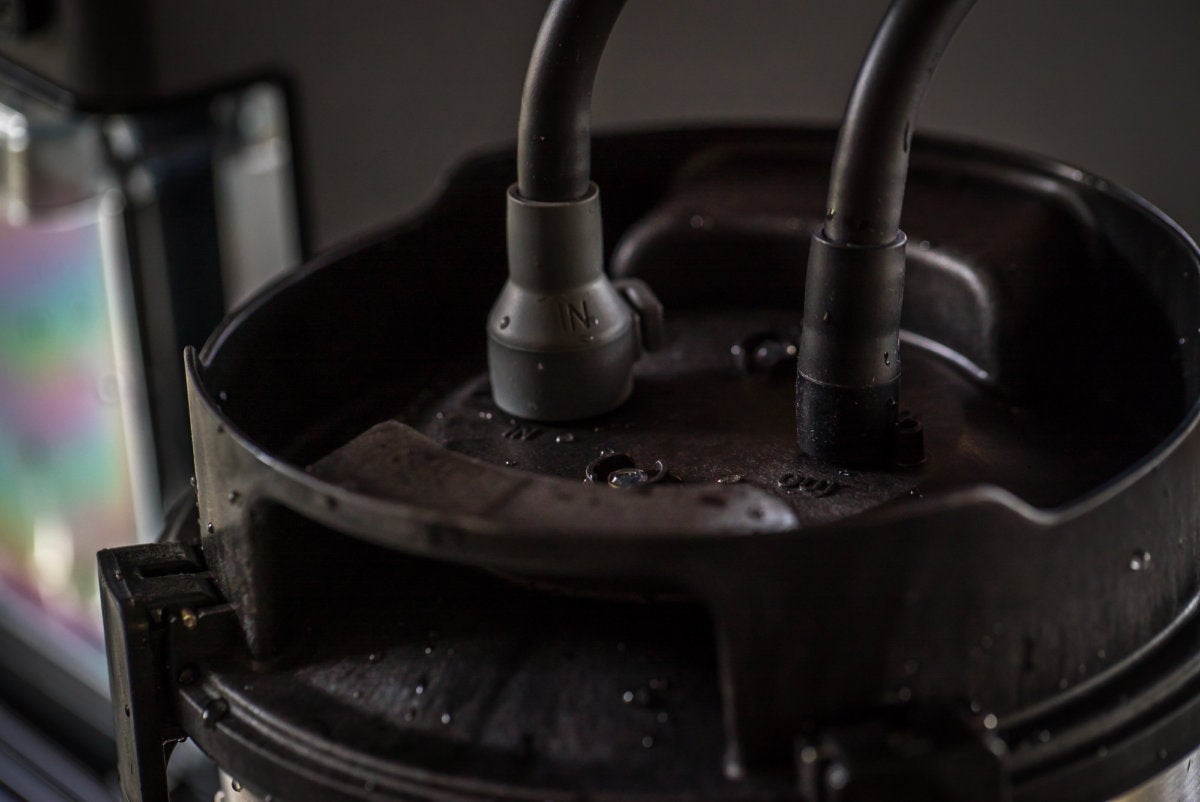 Daniel Masaoka
Daniel Masaoka Brewing with Model C
Taking less than 10 transactions of total hands-not late, brewing with PicoPaks is unbelievably promiscuous. They're essentially pre-packed, fully contained beer kits that admit granulate and hops packs, yeast, fermen sugar, and a pose-connected thermometer. The PicoPaks look a bit itty-bitty to hold all the ingrain needed to lay down 5 liters of beer, but PicoBrew confirmed that about PicoPaks are all grain, except for the higher solemnity beer recipes, which include additional dried malt extract. The food grain and hop packs slip into the principal filter bin. Then you fill an committed kegful with water, campaign a couple of buttons, and the Model C begins brewing.
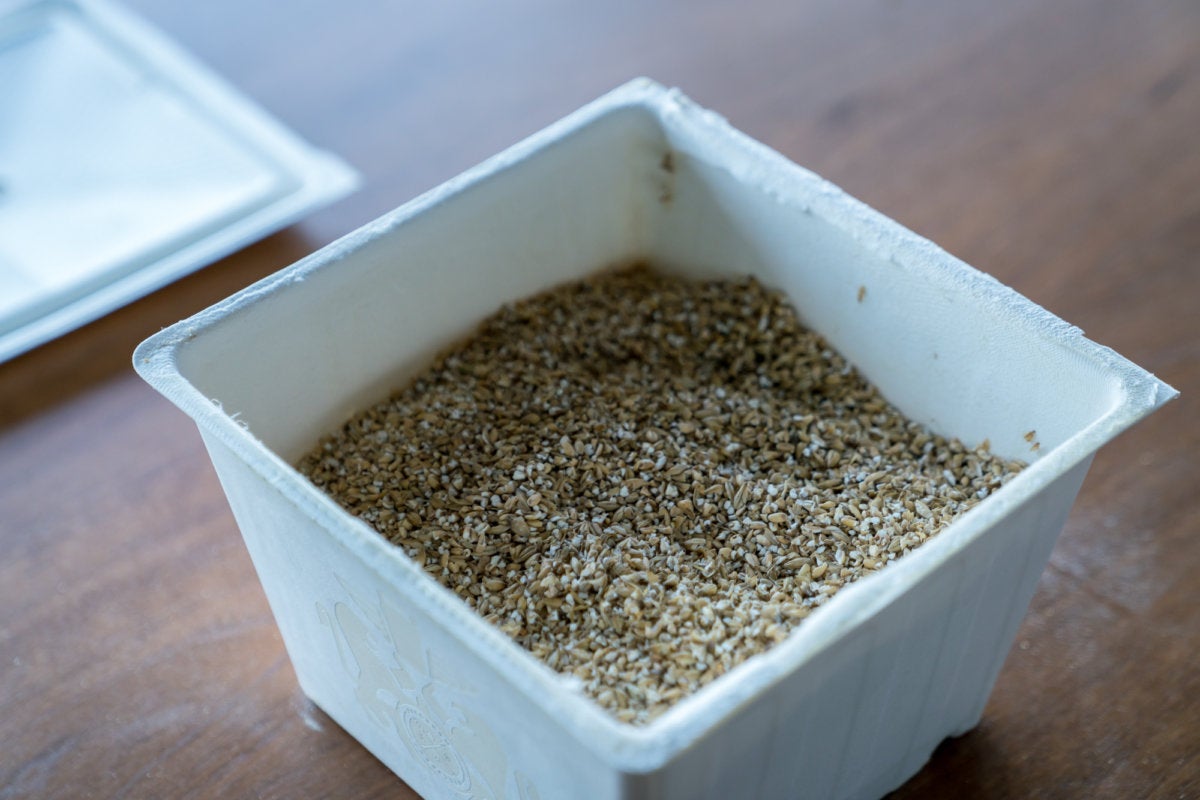 Daniel Masaoka
Daniel Masaoka You're not supposed to open the PicoPak bins, but I couldn't resist tearing into many extras to see what's within.
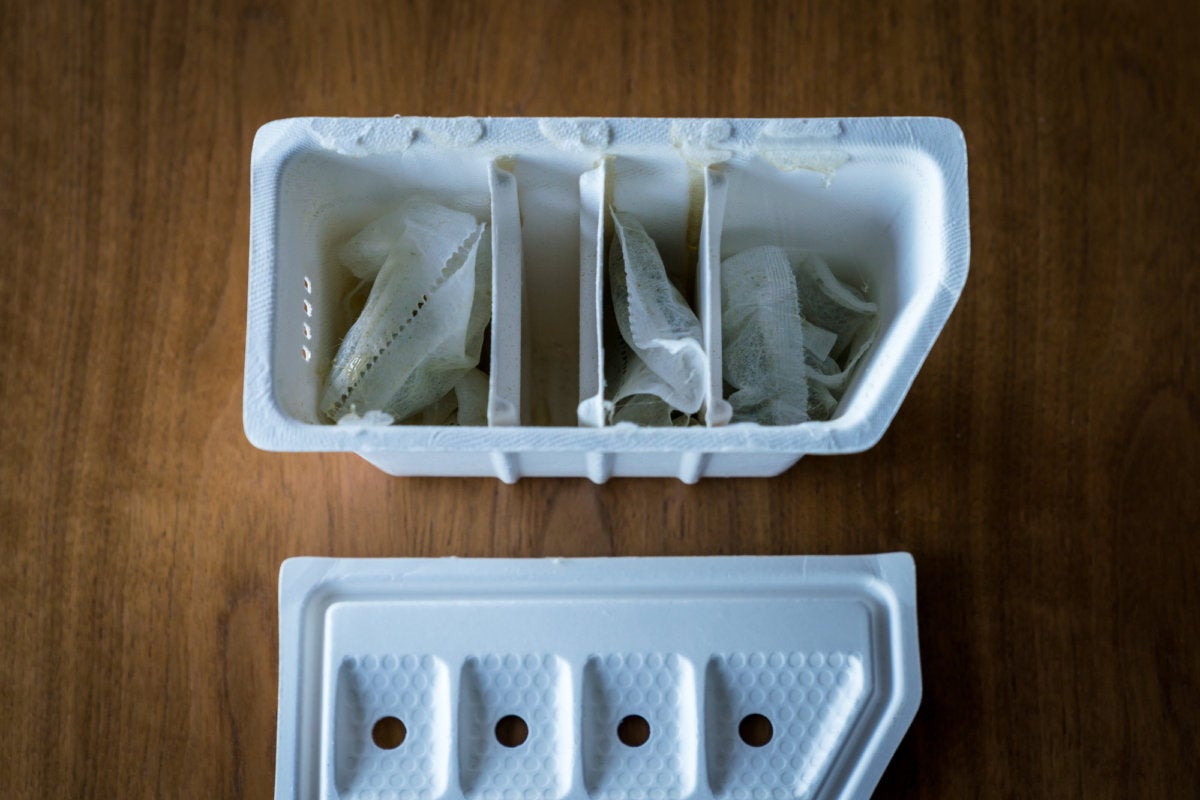 Daniel Masaoka
Daniel Masaoka PicoBrew says it's partnered with more than 200 breweries, and now offers to a higher degree 105 PicoPaks from those breweries, including recipes from Rogue, 21st Amendment, and Coronado. The PicoPak approach gives you access to inglorious craft beers that may not be on tap in your area, and you likewise vex enjoy A level of insolence that might otherwise involve a visit to the brewery. All that said, you can't do so much to tweak the beer created by a PicoPak. At the most, you nates change alcohol content and gall by about 5 percent through adjustments in brewing temperature and hop timings.
For this review, I curst commercial recipes, but there is an option to order customized FreeStyle packs. You select a base elan, then tweak the recipe by modifying the granulate bill, and hop additions. Once you've created your recipe, PicoBrew will send you a custom, pre-filled PicoPak.
Unfortunately, your FreeStyle options are currently a trifle limited, with sole three base malts and nine specialty grains. For example, I wanted to make a New England Style IPA, but flaked oats weren't an option. The hop side of the equation is fitting as limited with only nine options, and the yeast they send you is determined strictly according to beer style. On the plus side, PicoBrew tells me more ingredients leave make up added soon, and ordination online is cushy. The recipe detergent builder likewise gives you some additional customization opportunities with three record hop timings for bittering, feel, and aroma.
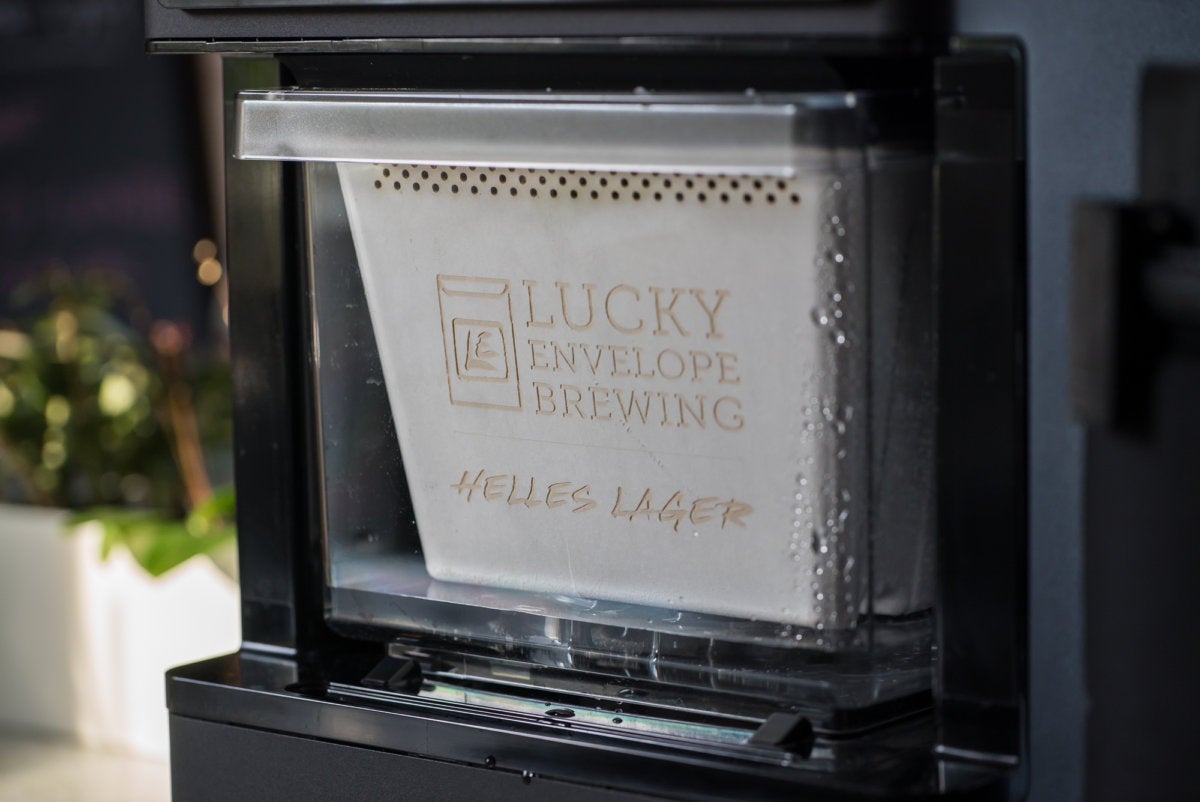 Daniel Masaoka
Daniel Masaoka The brewing itself takes between two and three hours depending along the beer recipe, simply it's pretty much set it and forget it. However, if you'rhenium at home, forgetting will comprise difficult as the machine is loud—definitely louder than a stand mixer, but not quite as ill as a liquidiser.
Because my kitchen opens up to the family room, watching TV was knotty. Happening the somersaultin side, if I had been brewing conventionally with pots and a romance tun, I wouldn't have even had time to watch TV. Instead, a good deal of my sentence would be dedicated to temperature dominance, preventing boil-overs, and tossing in hops at specific timings. With the Model C, you can walk away and monitor the brewing online, wake the stream stage, temperature, and remaining time in a entanglement interface.
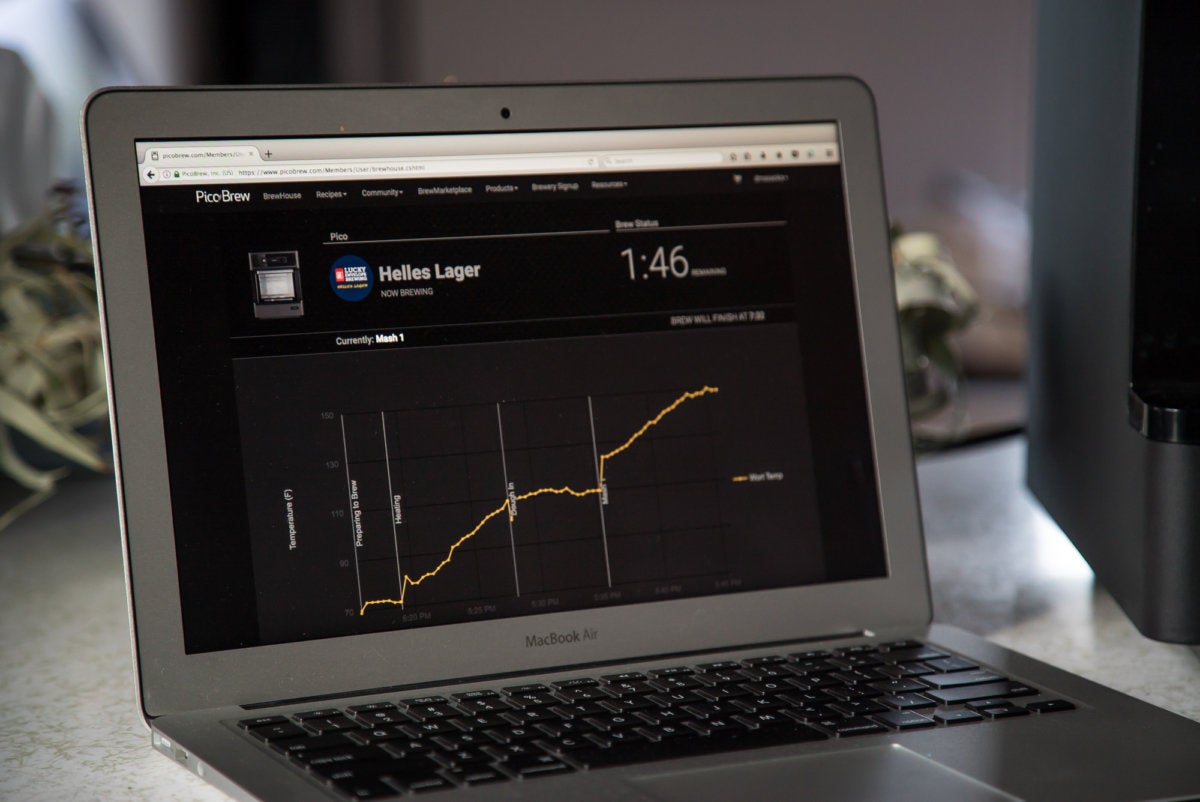 Daniel Masaoka
Daniel Masaoka You can reminder the brewing process online.
When the boiling present finishes and the blistering wort is complete, you attach a seal to the fermentation kegful ports, and set aside the whole thing to cool overnight. Arsenic for cleansing, I appreciate that the hops and grain receptacles are made from an essential pulp, devising information technology a breeze to just toss them into a compost bin.
Ferment
The day after brewing, your keg has cooled to room temperature, so IT's time to sequester the sticker thermometer, and total yeast to the now-cooled wort. The thermometer will LET you know how if you're within a proper temperature rank, and how long the fermentation will take.
One my test batches was a lager that, according to the PicoBrew recipe, calls for a "fast fermentation" tramp of between 59 to 75 degrees. But according to Fermentis, the provider of the provided barm, the range of its Saflager 34-70 yeast is 48.2 to 71.6 degrees and optimally 53.6 to 59 degrees. When information technology comes to yeast, if the keg is too cold, the beer North Korean won't ferment decent, and if it's too hot, you might get away flavors.
It was enough of a concern for me to contact PicoBrew: Would the high temperature mountain range glucinium OK? The company told me: "The Pico units have a back pressure device that prevents the production of the off flavors associated with fermentation at higher temperatures."
At present, I get that to make the process simple, they need to bank happening board temperature (as virtually users will have no cooling or heating options), but placid I had some doubts. I was able to hold bac the fermentation at around 65 degrees in my storage areas, and I didn't really want to ferment off-temp, so I was ne'er able to verify the efficacy of the indorse hale gimmick.
PicoBrew as wel provided Maine with its new PicoFerm, a cagy digital seal that monitors temperature and pressure during fermentation; I used it on another deal instead of the "dumb" silicone polymer seal that comes standard. The PicoFerm will alerting you if conditions convey likewise hot or excessively frore, OR if the keg has pressure issues. It bequeath too let you know when fermentation is complete.
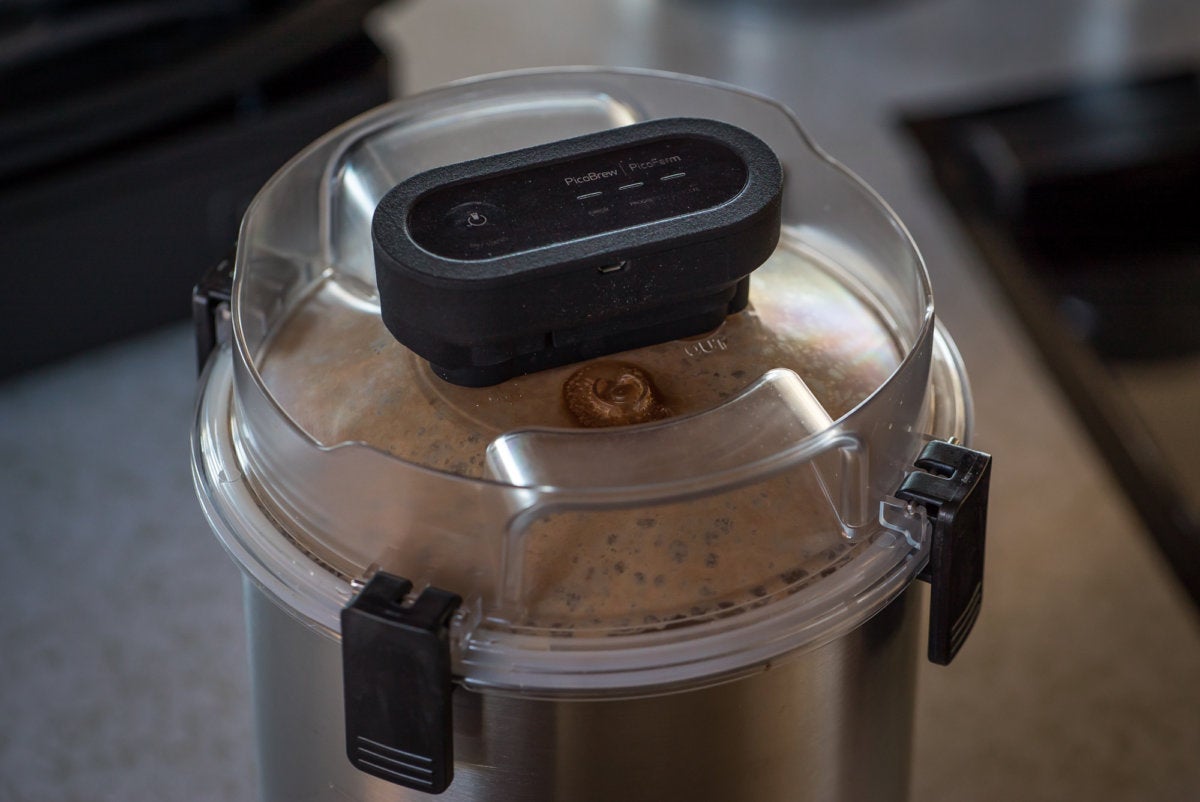 Daniel Masaoka
Daniel Masaoka The PicoFerm may give fleshed out novices ataraxis, but I just don't see the point.
In person, I didn't find it that useful, as the Model C kit comes with a sticker thermometer, and you should already have a general sensory faculty of the temperature straddle you're zymolysis in. What's more, if you'rhenium at work and a estrus beckon hits your home, there's rattling zipp you're going to be able to behave at that point. Furthermore there's identical shrimpy risk in letting a beer ferment a bit thirster than necessary. In fact, extra metre would likely ameliorate the beer. This A opposed to rushing it, and only waiting the minimum keep down of days.
Perhaps if you wanted to compare batches—looking at how agitation temperature and length affect savor—the PicoFerm would beryllium useful. But I just don't think Model C buyers are the type of people interested therein level of o.k.-tuning.
Fermentation takes astir unrivaled to 2 weeks depending on the temperature and the alcohol percentage (or ABV) of the beer you're brewing. After that, the full fermenting keg goes into the icebox for indefinite to three days to cold-crash. During this time, the yeast and other byproducts settle and cluster to the bottom.
Racking and Carbonating
After snappy-blinking, information technology's time to rack the beer to the serving keg and let information technology carbonate. At this point, the Simulation C comes back into play to pressurize the kegful and push your now-fermented (only flat) beer into the serving keg. The kit comes with one 5-liter aluminium serving keg, and you can ever buy more to get a stash of beers ready to drink down. Once the serving kegful is filled, you add the provided sugar and seal up the keg. This final dose of sugar reignites the fermenting process, creating carbonation. Once it's done carbonating—which takes about twice as long as original fermentation—the beer is intelligent to drink.
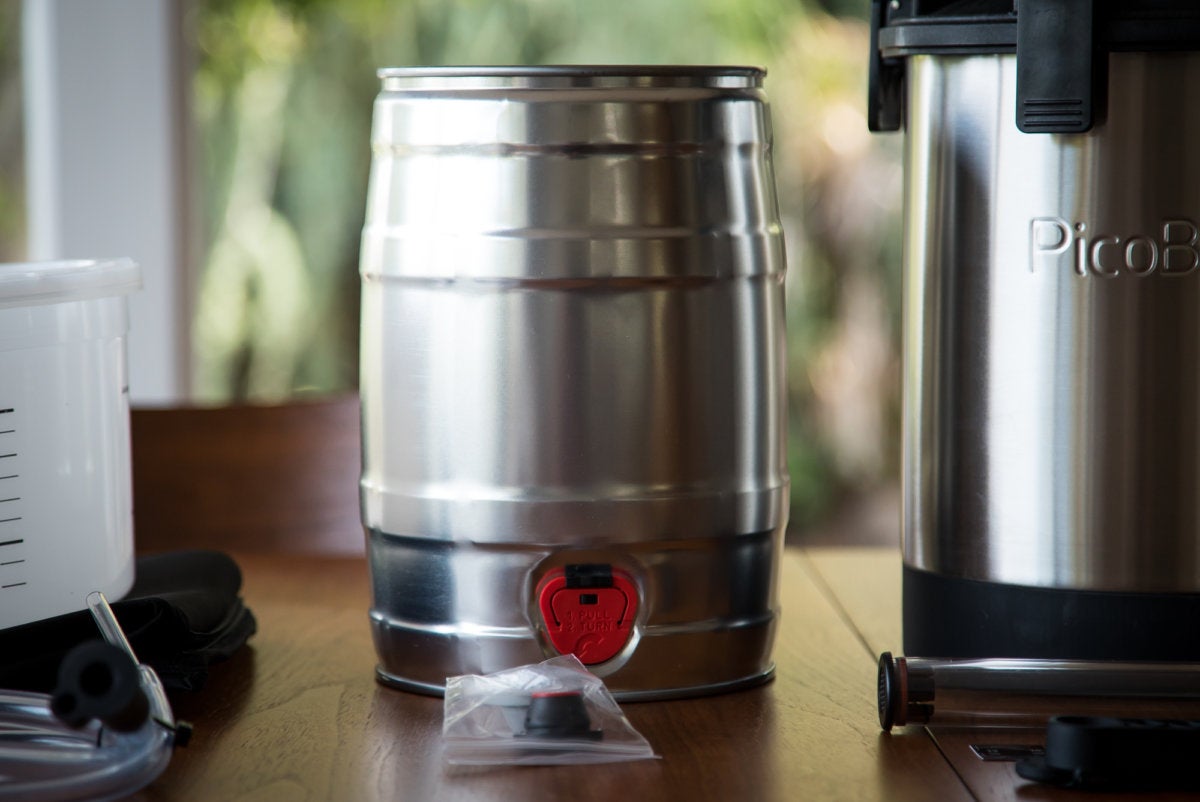 Daniel Masaoka
Daniel Masaoka PicoBrew also dispatched me a force carbonating kit that uses small CO2 cartridges instead of sugar to carbonate. If you go under this route, you can swallow the beer in just few days. Unlike the PicoFerm, I remember the pull out-carbonating kit up is worthwhile. Not only does it let you drink your beer much, much faster, it also keeps your beer from going flat—which is critical unless you put up kill the keg relatively quickly.
Should you bargain it?
4 Inch Personal Fan Model Fe10-c Breeze Electric
Source: https://www.techhive.com/article/3243338/pico-model-c-review.html
Publicar un comentario